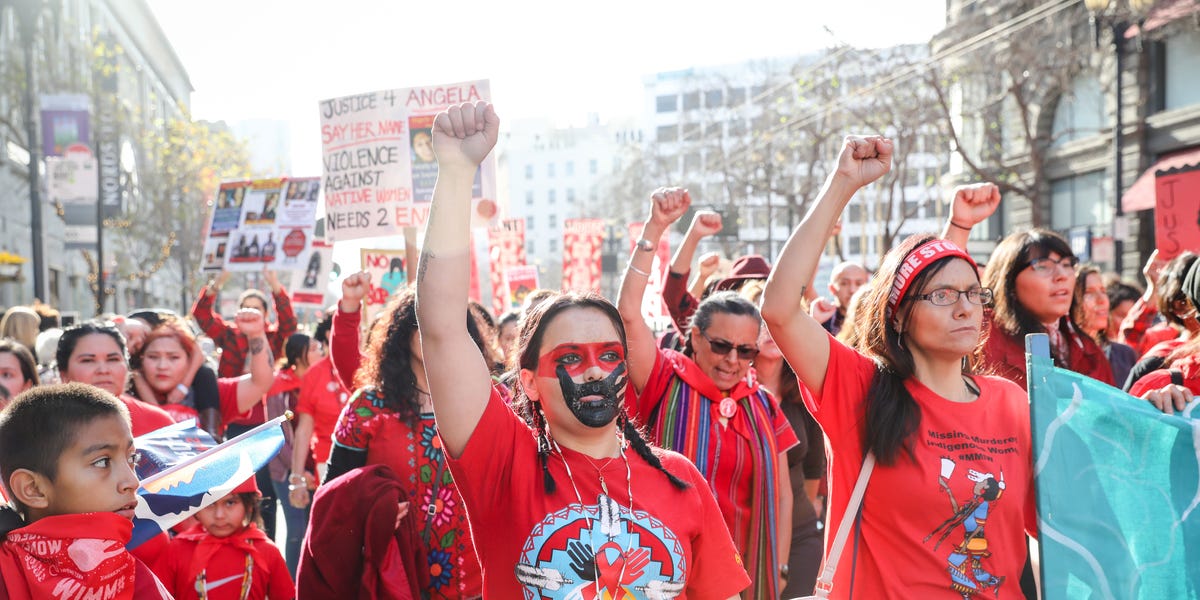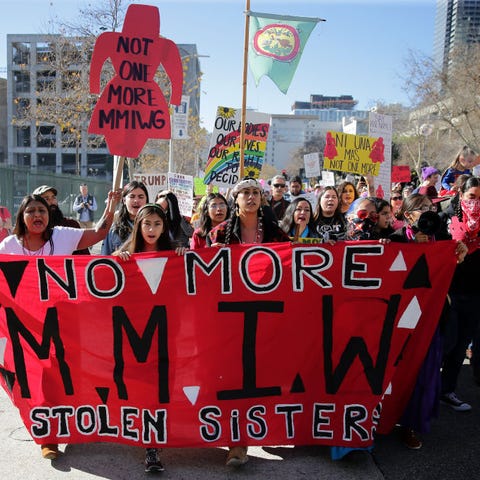Today marks the first national celebration and observance of Indigenous Peoples’ Day in U.S. history. Today is also International Day of the Girl, a day to support increased awareness of global gender inequalities. On this convergence, it seems only appropriate to shine a light on Native American girls and the erasure of Native women across mainstream media.
As part of my work with Protect the Sacred, a program from Harness to educate and empower the next generation of Native American leaders, I listen carefully to the priorities of our youth. Considering a lack of protection at local, state, and federal levels, our young leaders have expressed grave concern about the safety of our Native girls. In light of the national coverage of Gabby Petito’s case, more of the Native community is doubling down on demands around this concern and asking: What about us?
Two weeks after going missing while on a road trip with her fiancé, Petito was found murdered. I send my prayers and condolences to her family and loved ones; I prayed for a different outcome. While the investigation into her death continues, her case still dominates headlines. The attention and amount of coverage Petito’s case has received over the last month certainly reveals racial disparities that we, as Indigenous peoples, have known and felt repeatedly for years—and it continues to be heartbreaking for our community.
In Wyoming, the state where Petito’s body was found, a Missing and Murdered Indigenous People Task Force report found that 710 Indigenous people—mostly girls—have gone missing since 2011. Their stories receive little to no coverage, and hardly ever lead the news cycle. When a case does get coverage, it is often filled with stereotypes and victim-blaming language. Indigenous victims and other victims of color should receive the same level of coverage and support as Gabby Petito, because all girls on this planet are daughters, granddaughters, sisters, nieces, and cousins. No family should ever have to deal with the trauma of losing their children without support.
Beyond Wyoming, there is a much larger #MMIWG (Missing and Murdered Indigenous Women and Girls) and #MMIR (Missing and Murdered Indigenous Relatives) movement to call attention to horrific statistics that are, unfortunately, a reality for many Native communities across the country: Indigenous women and girls are ten times more likely to be killed than the national murder rate; Murder is the third leading cause of death for Native American and Alaskan Native women; Native American women under the age of 35 experience a higher murder risk than any other demographic.
Native women and girls know these numbers like the backs of our hands. We’re raised to be cautious and hyperaware. We’re told stories about our mothers, aunties, and sisters who went missing and were later found murdered—or who went missing and were never found at all. Even though we journey through life with acute awareness, many of us still experience situations that send our nerves into the stratosphere.
I can’t tell you how many times alarms have gone off in my head because of ignorant men whose ideas of Native women are clearly set in fantasy. In not-so-original fashion, I’ve been shouted at by men who wanted me to be their Pocahontas. The ones who didn’t realize I was Native and then found out I am would say things I didn’t know people were even allowed to say in the 21st century. Sadly, I know I’m not alone. Nearly all of the women in my family can recount similar stories of their own.
This treatment can stem from stereotypes portrayed in pop culture and mainstream media. Often, instead of positive portrayals, Native women are hyper sexualized and victim-blamed. A prime example is Adam Sandler’s The Ridiculous 6, a 2015 film that degrades Native women, starting with the female character names: Smoking Fox, Beaver Breath, and Never Wears Bra. That sort of narrative has a detrimental effect on Native girls. We become targets. In addition to high murder rates, more than one in two Native women will be raped or sexually assaulted in their lifetime, according to the Indian Law Resource Center. I’m part of that statistic, and so are many women in my family. In fact, the majority of Native women I know are part of that statistic.
One of the solutions to protect Native girls is to always stand against this kind of representation and advocate for accurate, positive representation of Native women. Another solution is to create space for Native women to share and uplift their stories, and to amplify and support the cases of missing Native women.
According to a report by the Urban Indian Health Institute entitled “Missing and Murdered Indigenous Women and Girls,” 5,712 cases of MMIWG were reported in 2016 and only 116 of them were logged in the Department of Justice database. It is for this reason that one of Sec. Deb Haaland’s first acts as Secretary of the Interior was to establish and launch the Missing and Murdered Unit to pursue justice for missing or murdered Native Americans and Alaska Natives. The Indigenous community commends Sec. Haaland for the formation of this unit to support Native women and girls who continue to be left out of conversations and decisions, and whose stories aren’t uplifted by the media.
I hope you’ll join me today, on this first Indigenous Peoples’ Day and International Day of the Girl, in saying the names and sharing the stories of some of these Native women and girls who are either still missing or whose cases haven’t been solved:
Misty Upham: A rising Hollywood actress whose body was found in Auburn, Washington, in 2014, after she went missing while visiting her sister. The 32-year-old died of blunt-force injuries to her head and torso, according to a report. The Native community has supported Misty’s family as they continue to search for answers in her untimely death.
Kaysera Stops Pretty Places: An 18-year-old who was murdered in August 2019 in Big Horn County, Montana.
Cecelia Barber Finona: A U.S. Army Veteran, whose body was located in Clark County, Nevada, in February 2021 after a nearly two-year search.
Pepita Redhair: A 27-year-old who was reported missing in March 2020. She is still missing, and her family continues to search for her. She was last seen in Albuquerque, New Mexico.
Ella Mae Begay: A 62-year-old a professional weaver who went missing from Sweetwater, Arizona, on June 15, 2021. Navajo Nation Police Department made contact with their person of interest, Preston Tolth, who was reportedly arrested on charges unrelated to Begay’s disappearance. There has been no update in her case since the summer, and our Diné (Navajo) community is seeking justice. Begay has brown eyes, weighs 110-120 pounds, and stands at just over five-feet-tall. She may be in a Silver 2005 Ford F-150 with Arizona license plate AFE7101. The Navajo Nation Police Department Shiprock District is asking anyone with information to call 505-368-1350 or 505-368-1351.
To support the ongoing search for many of our missing relatives and to help increase awareness of the #MMIWG and #MMIR movement, you can follow these accounts on Instagram: Missing & Murdered Diné Relatives, MMIP | Who Is Missing, Missing & Murdered Native Americans, SacredMMIWG / FFADAsacrées, Rising Hearts, and the National Indigenous Women’s Resource Center.
More information on the the #MMIWG and #MMIR movement can be found on Missing and Murdered Indigenous Women USA, National Indigenous Women’s Resource Center, and Urban Indian Health Institute.
This content is created and maintained by a third party, and imported onto this page to help users provide their email addresses. You may be able to find more information about this and similar content at piano.io


